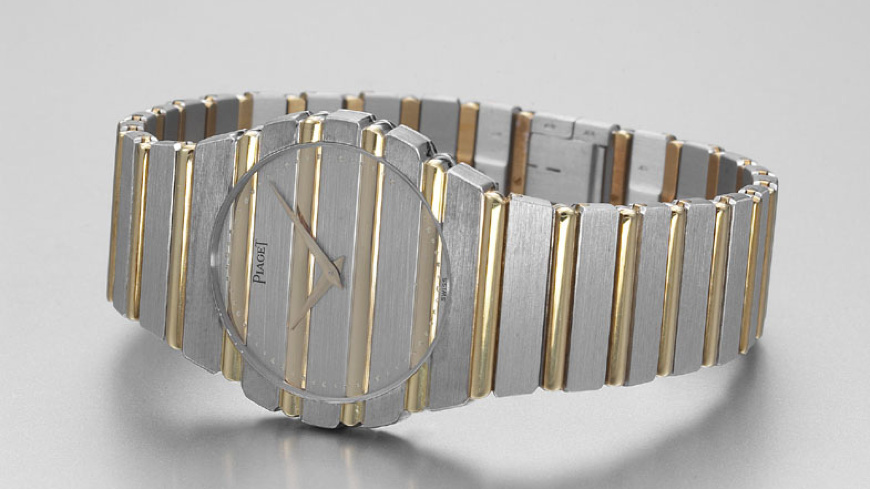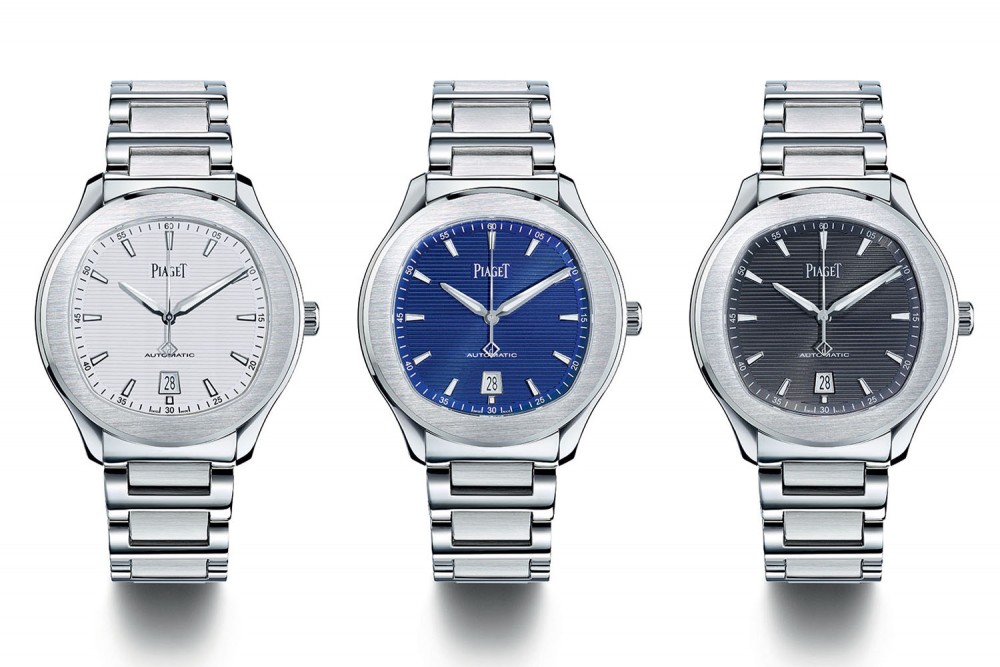Last week in New York Swiss luxury brand Piaget (re)-launched its new Polo Collection, including the heavily scrutinised Piaget Polo S. The response from most (not all) of the media outlets that rely on brands like Piaget to keep the lights on ranged from muted to all out exuberant praise. The feedback on social media channels and watch forums however was noticeably more vocal and critical, with phrases like ‘copycat’ and ‘lazy design’ being thrown around (there were other less sanitary ones too but I won’t publish them here – you’ll just have to use your dirty imaginations). So, how did it all go so wrong for poor Piaget?
The Piaget Polo S
Depending on how much you’ve read up on the subject you may already be aware that the original Polo model was launched by Piaget back in 1979. I wasn’t around back then but I’m told this watch was much beloved among the well-to-do movers and shakers of the 1980’s, which given its hideously gaudy design I find fairly easy to believe (see image below). Fortunately for the new collection the original design has been ‘refreshed’ somewhat. Unfortunately for Piaget this where things seem to have come a little unstuck.

Now, I haven’t seen the watches in the flesh myself yet so I can’t really offer an opinion either way but it seems the chief criticism people have – and by people I mean watch nerds – is that the Piaget Polo S is a poorly disguised copy of the much beloved and extremely popular Patek Philippe Nautilus designed by Gerald Genta (or alternatively the Aquanaut depending on who you ask). This is particularly ironic because Piaget’s marketing surrounding the watch, including its choice of high-profile celebrity representatives (i.e. Ryan Reynolds, Michael B. Jordan, etc), is supposedly based on the concept of leading rather than following. I’ll let you decide that one for yourself.
 Special thanks to our friends over at Monochrome Watches for this cheeky image.
Special thanks to our friends over at Monochrome Watches for this cheeky image.
So What’s The Big Deal?
Copying another design in and of itself is arguably not that bigger deal and is certainly not that uncommon in the watch world. Audemars Piguet and Hublot, Rolex and pretty much every other dive watch ever made, you get the idea. The issue it seems – from what I could deduce from all the online vitriol – is that the Piaget Polo S is simply not a very good copy. Well, that and the fact that Nautilus is an icon and reproducing an inferior version of it is sacrilege.
Whether the comparisons are fair or not is difficult to say. After all the Piaget Polo S does feature two high quality in-house automatic movement – the 1110P for the time only pieces and the 1160P for the chronographs – both of which were developed especially for the Piaget Polo S timepieces. Plus, in a first for Piaget, the entire collection is in steel, putting them in a much more friendly price range; $9,350-$12,400, well below that of a Nautilus (a standard steel chrono will run you about $50k).

Still, it feels like Piaget maybe played it a little too safe with the Polo S. After all, the idea was to lead rather than follow. Admittedly this is probably a big step out of the comfort zone for the brand but if you’re going to risk a little you might as well risk a lot and really give yourself a chance to win big. The design could’ve been a little edgier maybe, a little more aggressive. Then again I’m sure other people wouldn’t have liked that either – this is the internet after all.
Whatever your view on the Polo S it’s made for some pretty entertaining reading on social media these past few days which I have to say is surprising as I don’t usually consider Piaget an emotive brand. Its launch has also given us an idea of just how bad some of the larger watch brands are hurting in this current downturn and what they are planning to do about it. Make no mistake, an in-house movement for under $10k from a major name like Piaget is a big deal. Watch this space to see what comes next.
For more information about the Piaget Polo S please click here to be taken to the official Piaget website.